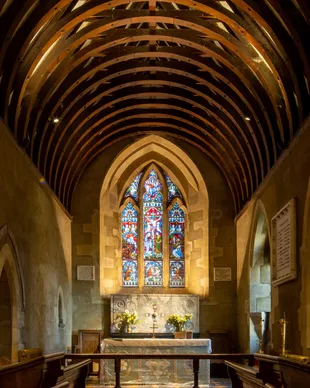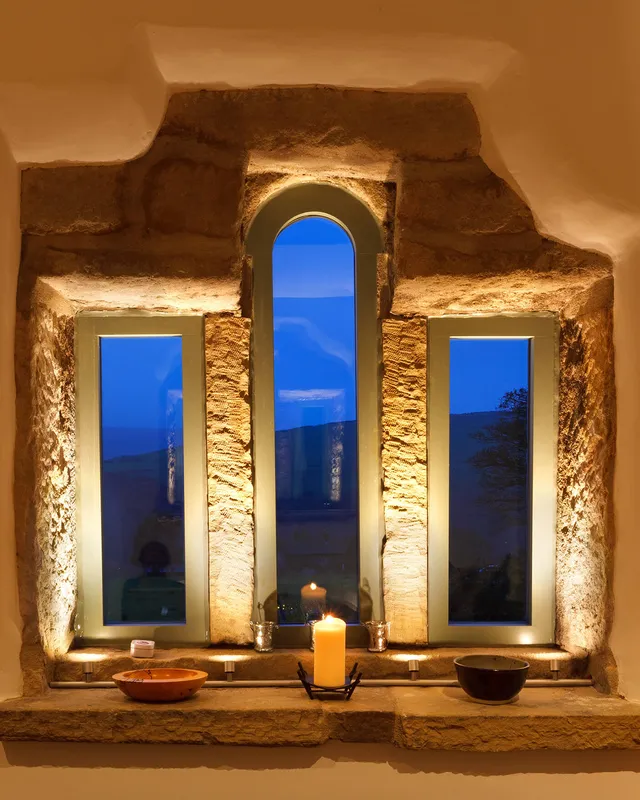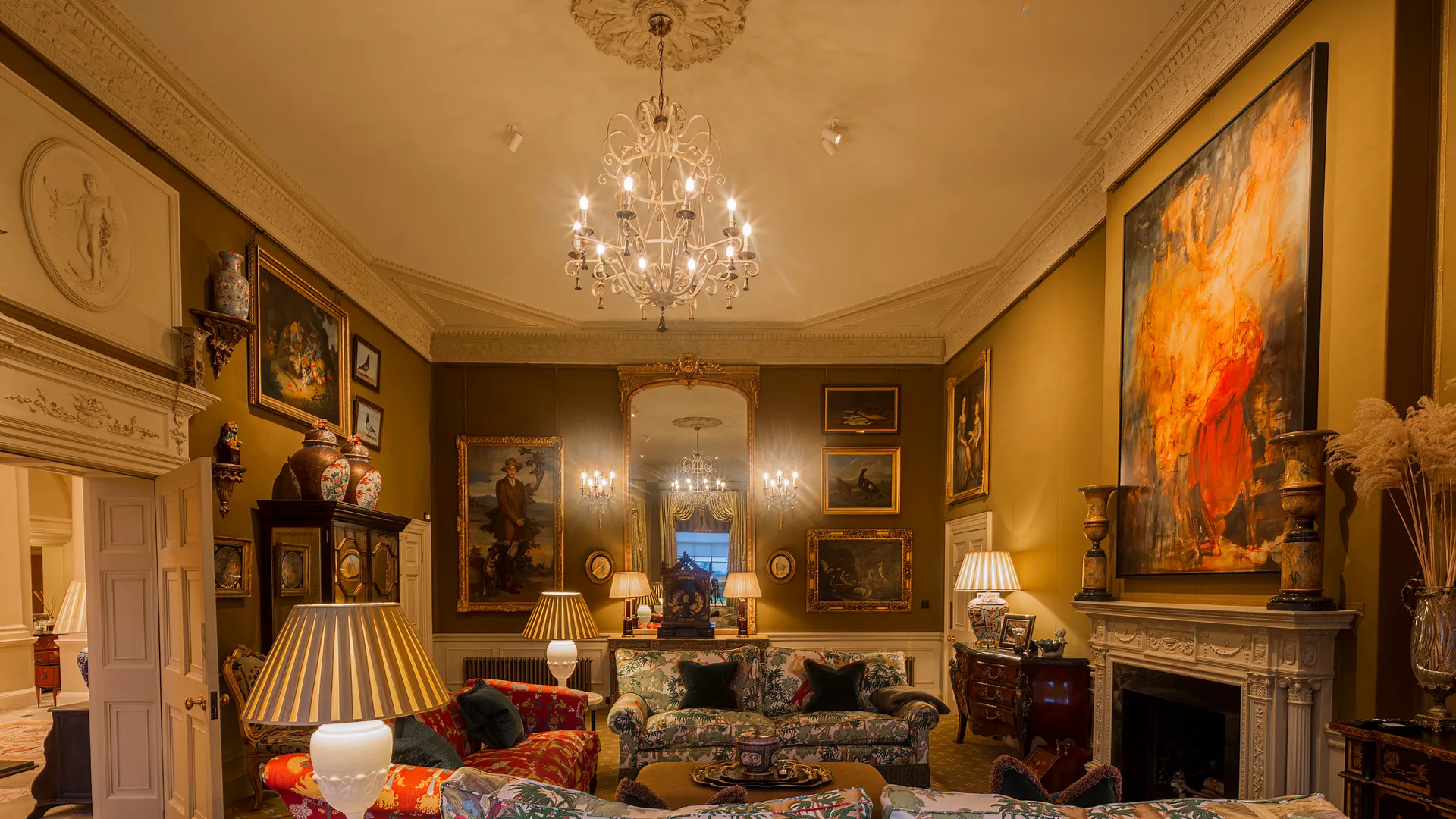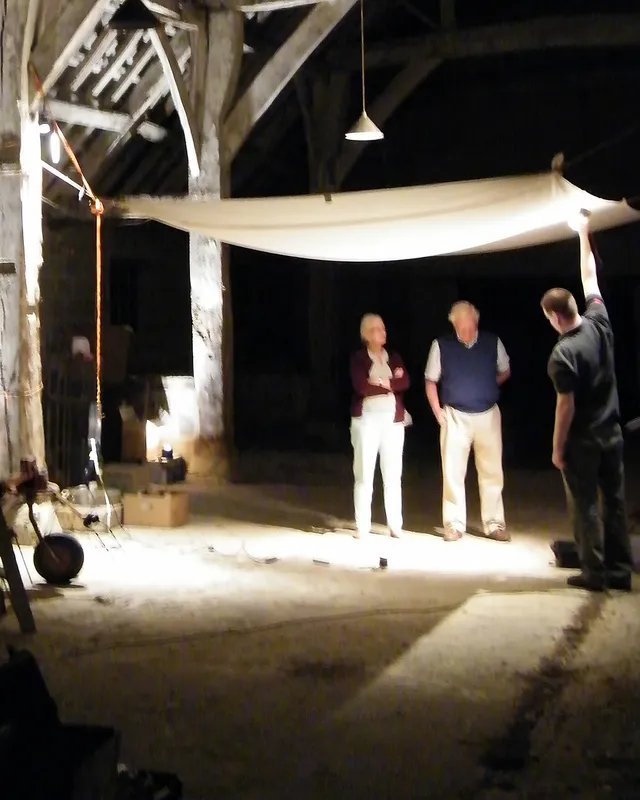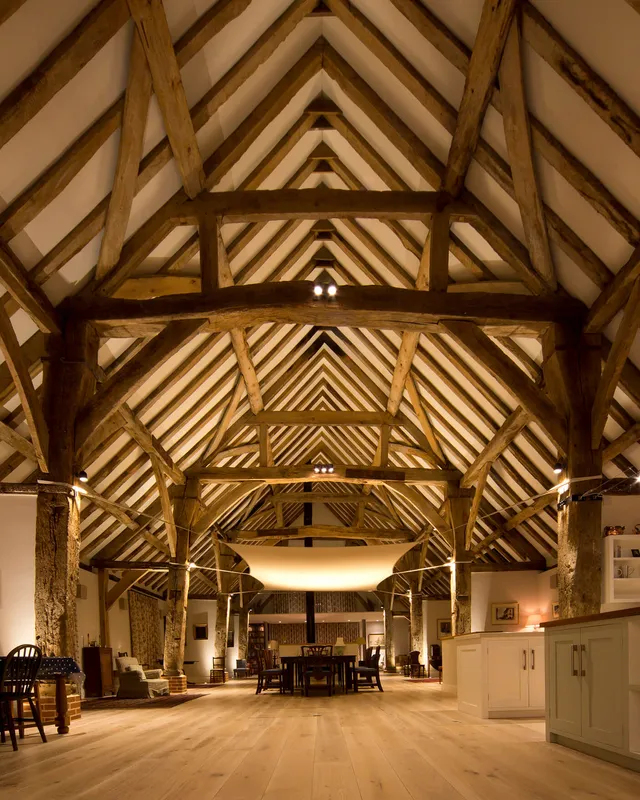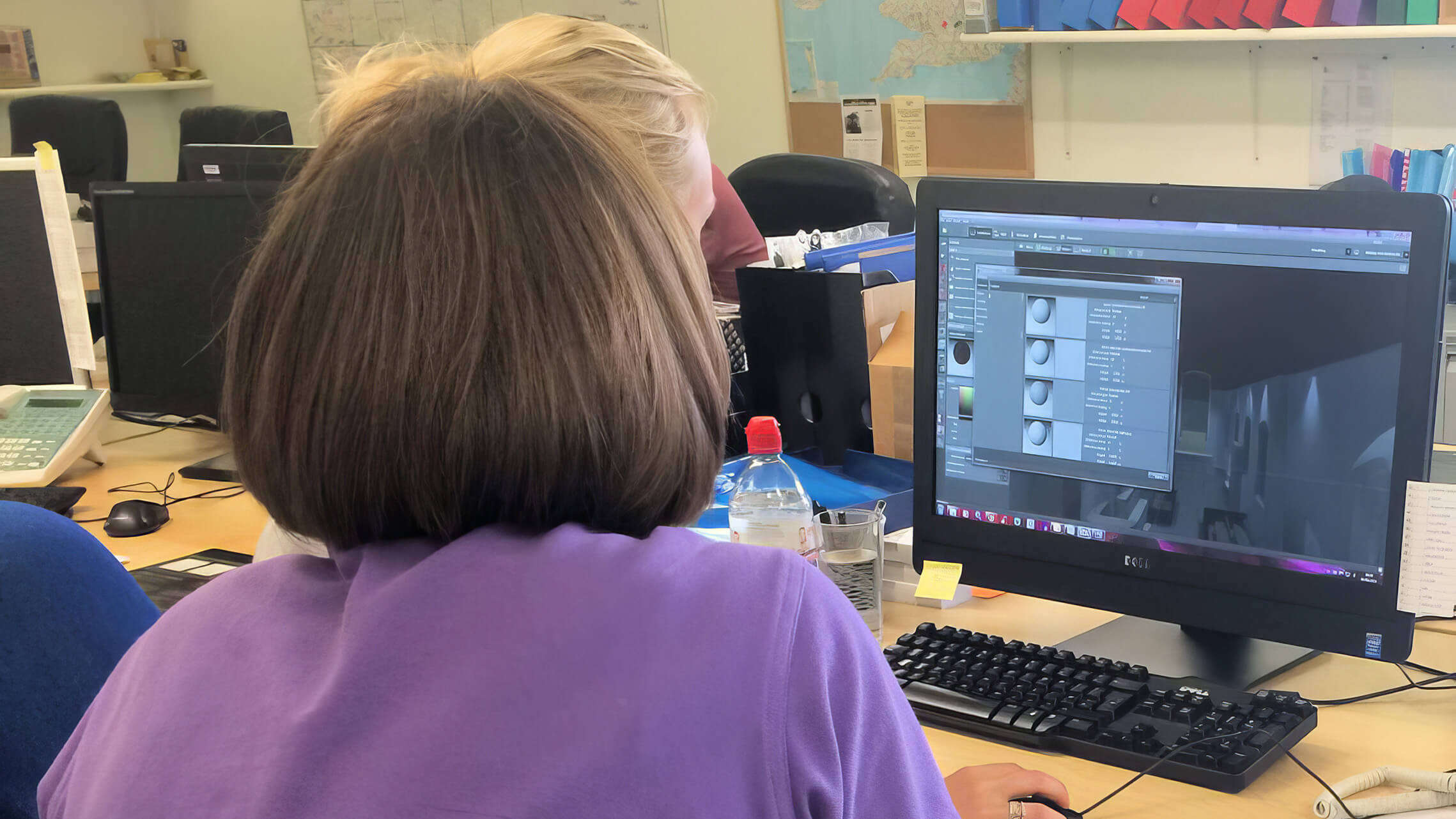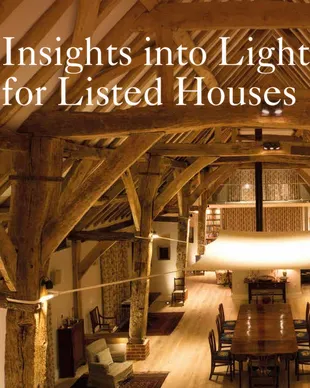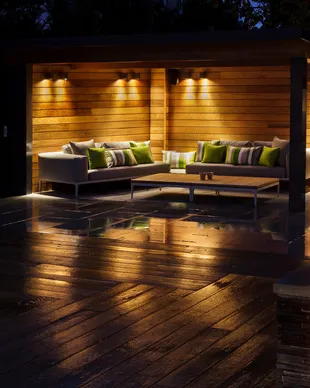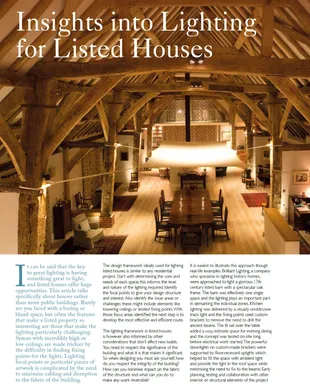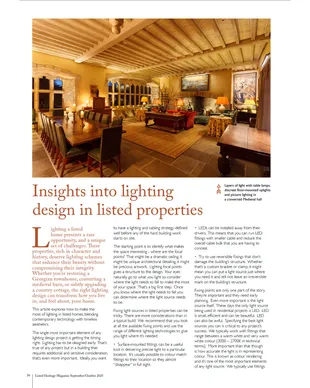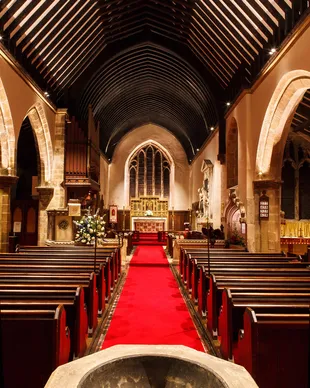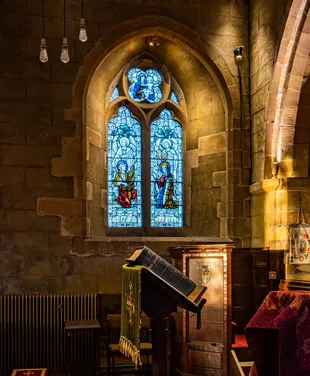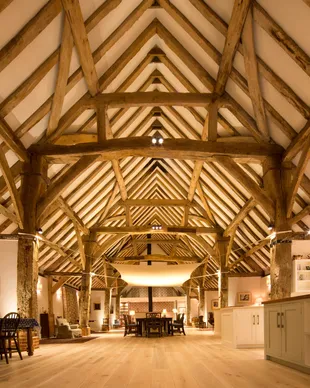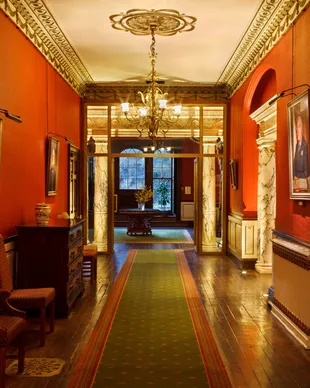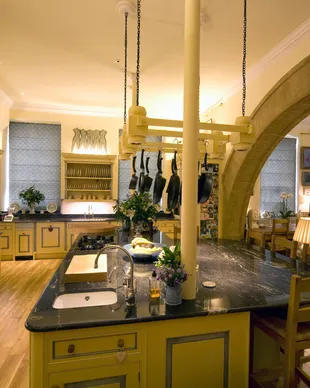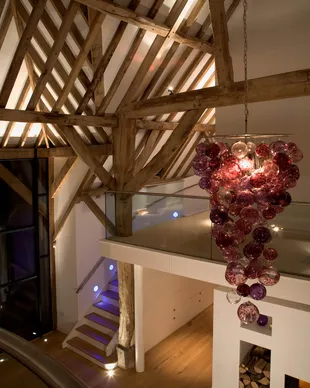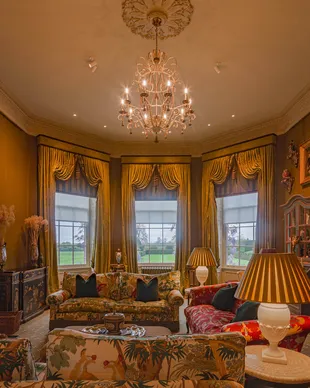We’ve documented some of the stages for the historic Hampshire barn in a series of short blog posts. One of the earliest elements of the design involved testing a “sail” over the dining table, located there to make the vast space feel cosier. The relationship between the sail and the lighting around it was key. Mounting heights and locations had to work together, and these were tested onsite. After agreeing the concepts, over the next 12 months we tested dozens of fabric samples together with different light sources, to get the optimum relationship of light, glare and colour between the two.
To minimise the impact on the fabric of the building we used a relatively small number of strategically placed, but high output light fittings, mounted on custom brackets. A significant contributor to the ambient light in the space actually comes from the ground recessed fittings. The cabling was designed so that none went through the roof structure.
Working with the Conservation Officer, demonstrating the concepts and detailing the custom fixings early on made it a lot easier to get agreement from all parties involved in granting consent.
